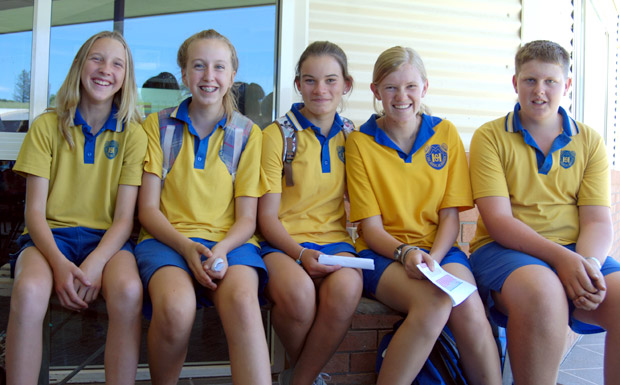
December 5, 2013
Students from Murgon State High School went head-to-head with students from St Mary’s Catholic College in Kingaroy on Wednesday … and it was all in the name of science.
The 35 students were taking part in the Wonder Of Science, an initiative of the University of Queensland which aims to give students an appreciation for what’s involved in science and what a career in science might be like.
The program, which is the brainchild of the Queensland Division of the Academy of Technological Sciences and Engineering, has been building a passion and enthusiasm for science and technology in more than 1000 young Queenslanders this year.
It is focussed on students in Years 6-9, with a particular emphasis on those living in rural and remote communities.
Younger students taking part in this year’s program had to build a “Rube Goldberg Machine” (a complex gadget that performs a simple task in a indirect, convoluted way) … in this case a device that would burst a balloon in the most complex and comical manner they could devise.
Meanwhile older students investigated the effects of increased salinity on seed germination and how these results could influence flora and fauna in a specific ecosystem – topics that will increasingly demand the attention of scientists in the foreseeable future.
On Wednesday the students taking part in the program gathered at St Mary’s Catholic College to deliver their findings (or run their Rube Goldberg machines) in a competitive student conference. This also gave them some experience of the scientific peer review process, which is an integral part of any research scientist’s career.
Dr Andrew Stephenson, who travelled from the University Of Queensland to oversee the day, said feedback on the course from both students and teachers had been “wonderfully positive”.
He said that at the moment all affluent countries appear to have declining educational standards.
He believed this was because once a country reached a level where most of its citizens were comfortable, the importance of education was downgraded in the public mind.
By contrast, he said, people living in poorer countries placed a much higher emphasis on the importance of education because it’s seen as the surest way to advance an individual’s living standards.
So part of the aim of Wonder Of Science was to reverse the perception that science was “geeky” and instead show it could be exciting, fun and accessible to anyone who had an interest in it. And also that science and technology played a vital role in keeping Australia’s living standards high.
Dr Stephenson said that some South Burnett schools had shown initial hesitancy when the program was proposed to them because teaching staff are already overloaded and time-stressed.
However, the schools that chose to become involved this year quickly found it was very beneficial.
“All of them told us they’d do it again,” he said.
He believed the program would take up to three years to gain “real traction”, but was very happy that 82 schools in regional Queensland opted to take part in this year’s activities and praised the South Burnett schools who’d taken part.
He also praised University of Queensland PhD student Dan O’Connor, who is based at DAFF’s Kingaroy Research Station, for overseeing the operation of Wonder Of Science in the region.
“I really can’t praise him highly enough,” he said.
- Related article: Science Can Be Wonderful























